Venice is magic, without a doubt: The canals, the bridges, the palazzi, the gondolas – I could go on and on. Nevertheless, a visit to Venice can also be very stressful: The tourist masses, the pushing, the shoving, the lines, the heat. Therefore, especially if you are in Venice for more than just two or three days, you should treat yourself to a day trip to the beaches of the Lido di Venezia.
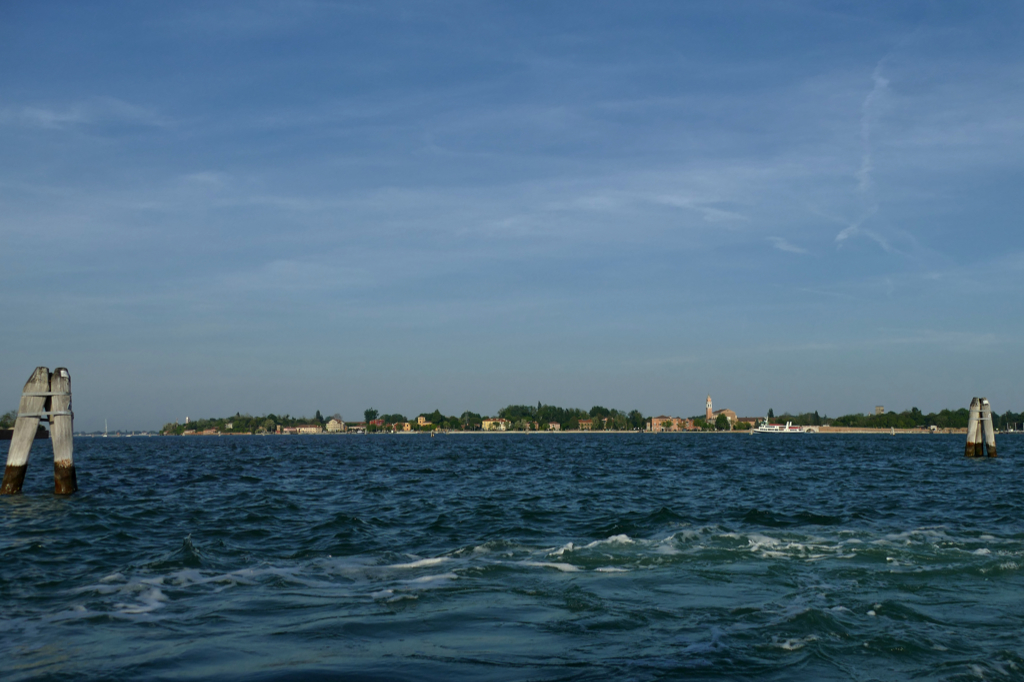
Break away from Venice and hop on the vaporatto that rushes you to the Lido di Venezia in about half an hour’s time. Here, you’ll enter a world of serenity and the flair of a Mediterranean beach resort.
- Lido di Venezia
- As Time Goes By
- In With the In-Crowd
- Beaches
- Beyond the Beaches
- How to Get There
- A Short Trip Back In Time: The Aeroporto di Venezia-Lido Giovanni Nicelli
- How To Get Around the Venetian Lagoon
- How To Get Around the Lido di Venezia
- Getting There Organized
- What to Eat And Where to Sleep
- Venice Entrance Fee
- Map
- Pinnable Pictures
Lido di Venezia
Everything about Venice is just unique, hence, so is the city’s beach resort, the Lido.
The term Lido stems from the Latin word litus, which translates to coast or beach. Nomen est omen, this island stretches 11 kilometers east of the Venetian lagoon. Towards the Adriatic Sea in the east is the Lido’s strongest suit, namely, long stretches of sandy beaches.

Sadly, many of those belong to the big fancy hotels and are therefore private. Obviously, there are also public beaches, which are also nice. However, they can get very crowded during the high season. As a matter of fact, the beaches are the main seaside resorts for Venetians and tourists alike. The other islands that have beaches like the Pellestrina and the Lido di Jesolo are rather far and more difficult to reach.

As you get to the Lido, you will notice right away that it has a very different vibe than the other islands in the lagoon. It’s by far not as mesmerizing and almost surreal as Venice, Murano, and Burano, where at times you feel as if you fell into the rabbit hole. It’s more real, however, very nice with the air of an endless summer.
As Time Goes By
Until the 19th century, the island was only very sparsely populated. However, a village was raised around the church of Santa Maria Elisabetta. Today, the avenue Gran Viale Santa Maria Elisabetta is the core of the island. It stretches from the Lido’s jetty all the way to the beach.

Actually, this is one of the island’s broadest spots. This arterial street is lined with hotels, shops, and restaurants.
In 1855, Europe’s first public bath was built on the island. The Lido got famous as the epitome of beaching’n’bathing. In the late 19th century, the construction of the Porto di Lido, the island’s jetty, was completed, and since then, the vaporetti have brought visitors quickly from San Zaccaria in the Centro Storico to the Lido.

Howsoever, for a long time, the Lido di Venezia was not a particularly popular destination for tourists or locals. Due to its distance from the city center, very few tourists ended up on the narrow strip of sand at that time. Also, the population rate was decreasing.
In 1883, the Lido was incorporated into Greater Venice. The first school was built on the island in 1892. In 1900, the supply of fresh water was extended from Venice to the Lido, followed by electricity in 1905.
In With the In-Crowd
Things have improved a lot over the decades as people have acknowledged the island’s uniqueness and turned it into a posh hotspot. Today, the Lido di Venezia offers some excellent lodging options, private beaches, and fine dining.
Especially during the annual film festival, the rich and the famous from all over the world can be spotted on the island. Nevertheless, the once iconic Grand Hotel des Bains had to close its doors in 2010. Until then, it was frequently visited by movie stars during the film festival.
The Grand Hotel des Bains, which you can still see from the outside, obviously, was built in 1900 for wealthy tourists. Quickly, it became famous, for instance, through the German writer Thomas Mann. His stay in 1911 inspired him to write the famous novel Death in Venice. To learn more about this great Nobel Prize-decorated author, go to my post on his ravishing hometown, Lübeck.
Also, Luchino Visconti’s same-named movie was filmed on the island in 1971. The hotel was also the film set for the scenes at the Shepheard’s Hotel in Cairo in the movie The English Patient. Finally, the famous dancer Sergei Pavlovich Diaghilev died in the Grand Hotel des Bains in 1929.
Nevertheless, there are still grand structures such as the Grand Hotel Excelsior* and the beautifully decorated Grande Albergo Ausonia & Hungaria*.
Beaches
Beaches on the Lido are just perfect for everyone: As they are gently sloping into the Adriatic, even the youngest children can frolic and bathe carefree. Various dams and other protection programs are shielding the bathing area from rough waters.

However, beware that some parts of the beaches are privately owned. You can recognize them by their long rows of so-called capanne. A capanna is a large cabin with a veranda and a top fitted to the closed structure. Yes, basically a cabana, obviously.
Apart from a capanna, you can rent deckchairs, beach umbrellas, sun loungers, and other stuff that make a beach day comfortable and fun. It won’t surprise you that all those goodies come with a huge price tag. For instance, an umbrella and two chairs set you back 26 €uros. At that price, you can also buy your very own at any larger supermarket.

But fear you not, the Lido also has large areas of free beaches. They are nice and clean, but can get quite busy, especially on weekends and during the high season. Some of the nicest free beaches are actually pretty close to the Santa Maria Elisabetta vaporetto jetty. While you have to bring your own beach towels and possibly refreshments, there are still bathrooms and showers you can use.
Also, surfing and other water sports are quite popular on the beaches of the Lido.
Beyond the Beaches
Well, if you’re coming to the Lido on a day trip from the Centro Storico, you’re probably looking for lying’n’lazing on the beach rather than for landmarks. Because when it comes to landmarks, hardly any place on planet earth beats the Centro Storico.
Nevertheless, there are some interesting sights to visit on the Lido, too, and here they are on a brief list.
Church Of San Nicolò Al Lido
The original church was built around 1053 and considerably enlarged in 1316. Actually, the Doge Domenico Contarini was buried there in 1071. In 1071, his successor, Domenico Silvo, was elected Doge in this very church, as Saint Mark’s Church was still unfinished at the time.
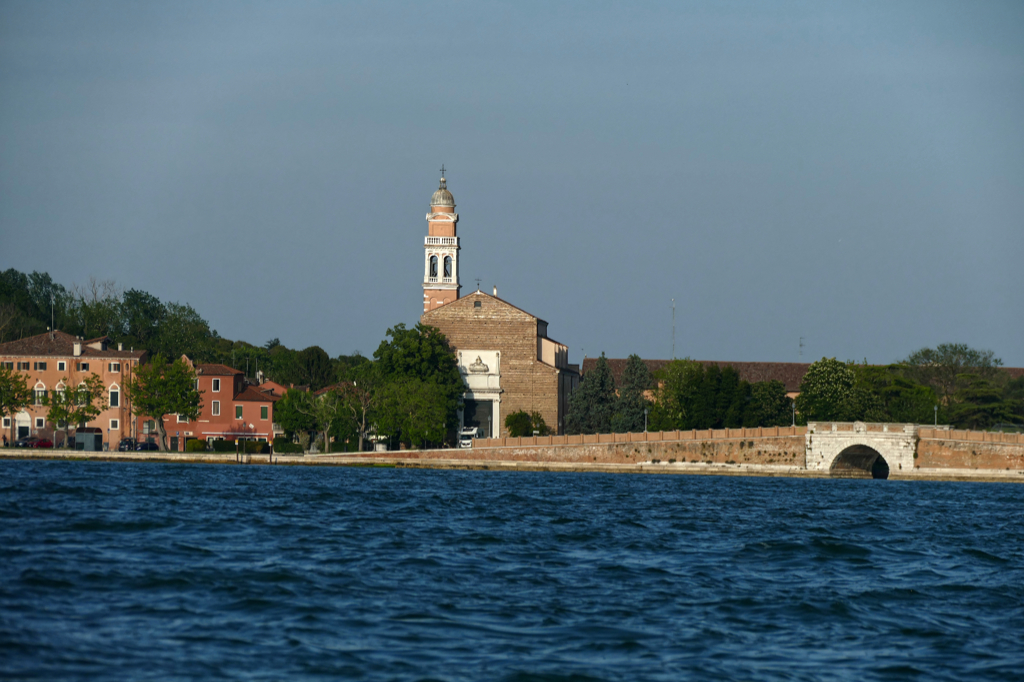
According to legend, returning Venetian crusaders laid the remains of Saint Nicholas of Myra, the patron saint of seafarers, in the church in 1099.
The current church, however, was commissioned by Francesco Contin in a different spot in 1626. Nevertheless, the remains of the old church can still be found in its cloister area. Also, parts of the south aisle of the original church have survived
The main attraction is the walnut choir stalls from the 17th century. They are depicting 27 scenes from the life of Saint Nicholas.
Masses are held on Saturday at 6 p.m. and Sundays at 11 a.m.
Tempio Votivo
The war memorial Tempio Votivo was built between 1925 and 1935 by the architect Giuseppe Torres. As a matter of fact, it is the last major religious building constructed in the lagoon. It was built to show gratitude that Venice was spared major damage during WWI.
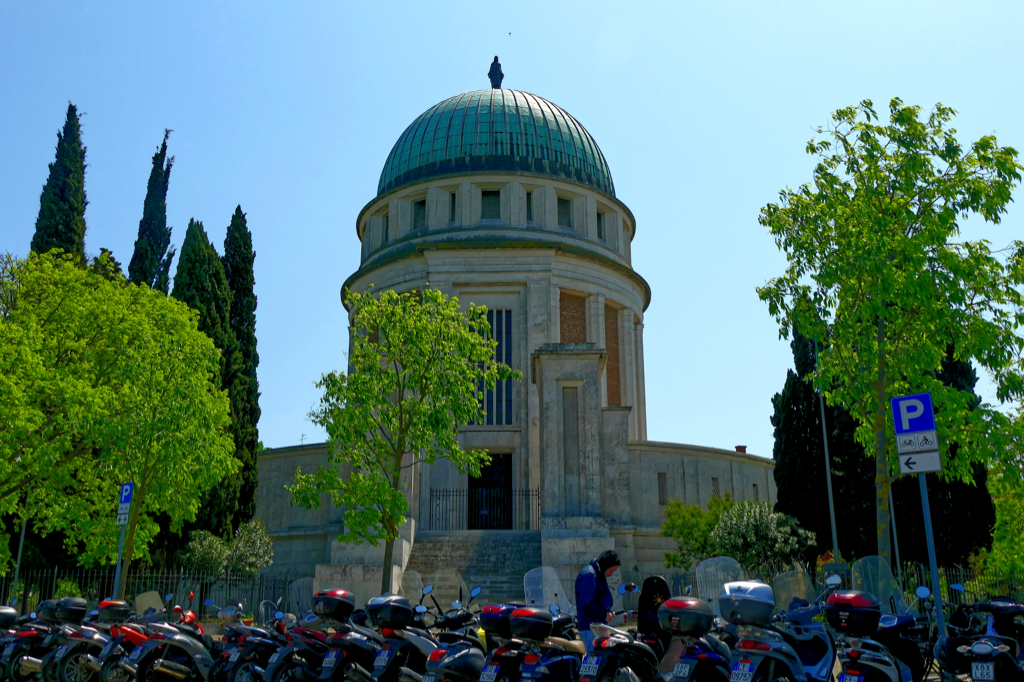
Today, the high tower with its large green copper dome is one of the Lido’s most prominent landmarks. However, it is closed to the public and can be admired only from the outside.
Old Jewish Cemetery
Venice’s Jewish population got the first opportunity to create a cemetery in 1386. The cemetery is located near the San Nicolò church in the north. Nowadays, the Ancient Jewish Cemetery can only be viewed upon appointment.

However, there is a newer section that is open to visits from April to September between 9.30 a.m. and 12.30 p.m. and then again in the afternoon from 3 p.m. to 6.30 p.m. During the winter months from October to March, it’s only open in the morning from 9.30 a.m. to 2.30 p.m. Obviously, it remains closed on Saturdays and Jewish holidays.
If you visit the cemetery before heading for the beach, note that there is a small Coop supermarket where you can stock up on snacks and drinks. However, according to this lovely Mediterranean tradition, it closes for a long lunch break between 1 p.m. and 4 p.m. I’m pointing that out since I got there about three minutes before that closure and only had time to quickly grab whatever. I kid you not, the staff let down the shutters of the fridge while I tried to take some juice. You’d better make it fast.
Grande Albergo Ausonia & Hungaria
The historic Hotel Grande Albergo Ausonia & Hungaria* is located on Gran Viale Santa Maria Elisabetta. In 1907, businessman Ludovico Fabrizio commissioned the architect Nicolo Piamonte to build it.
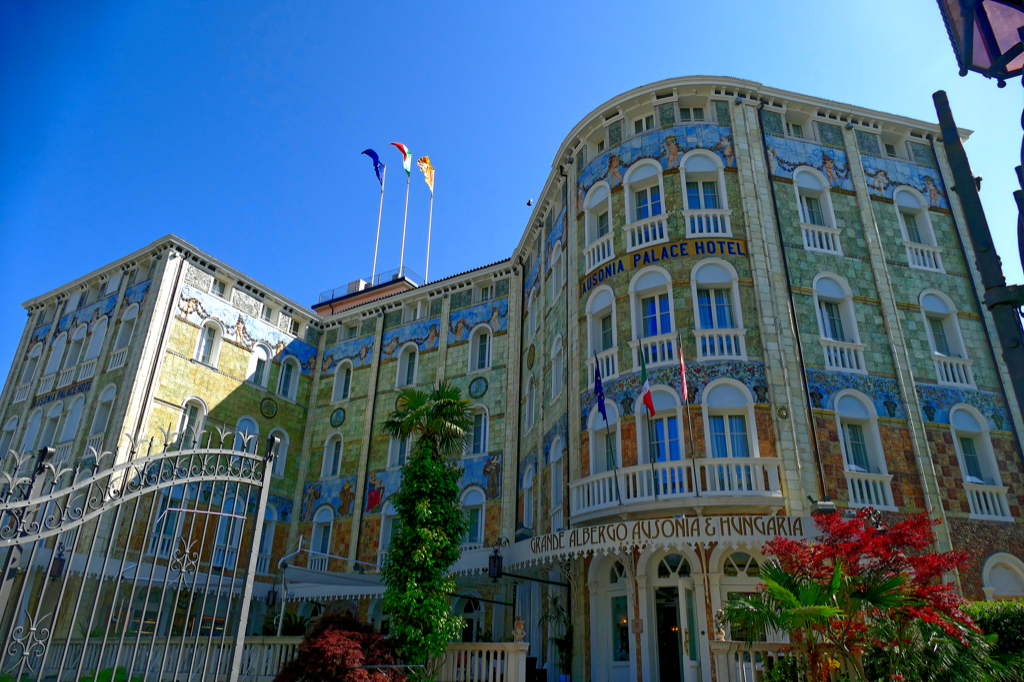
In 1913, the famous sculptor Luigi Fabris, together with his colleague Doro Sebellin, created the amazing façade. On incredible eight hundred square meters is an extraordinary multicolored mosaic made of polychrome majolica. The design corresponds to the Neo-Renaissance. Of particular artistic value is the part of the female figures that is realized as a life-size bas-relief.

In the early years, the hotel’s clientele came mainly from Eastern Europe. After all, the Kingdom of Hungary was not only connected to Venice by rail. There was also a connection by sea to Fiume, today’s Rijeka in Croatia. Obviously, already then, the hotel was frequented exclusively by the high society.
Closed during WWI and reopened in 1920, the hotel was a key player in the Lido di Venezia’s gilded age when guests danced the night away at its elegant dancing parlor.

In 2011, the hotel was renovated. The guest rooms and suites are furnished with original Art Nouveau furniture. They were designed by Milanese artist Eugenio Quarti more than a century ago and exhibited at the prestigious Salone dell’Arte in Paris in 1907.
During its long history, the Grande Albergo Ausonia & Hungaria* has welcomed Prince Edward of England, Sarah Churchill, Claudia Cardinale, and Jerry Lewis, among other rich and famous. Of course, many national and international stars still stay at the Grande Albergo Ausonia & Hungaria* during the film festival.
Alberoni
Let’s move from very posh to very natural.
Alberoni is the perfect place for visitors who are looking for a quiet spot. It is a protected natural reserve located towards the Lido’s southern tip. To get to the beautiful, wild beach, you have to cross a small pine forest and some dunes.

The dunes began to grow in the 1800s. Today, they are up to 9 meters high and home to a diverse ecosystem. Already, English poet Lord Byron and German writer Goethe praised Alberoni’s wild beauty enthusiastically in their poems.
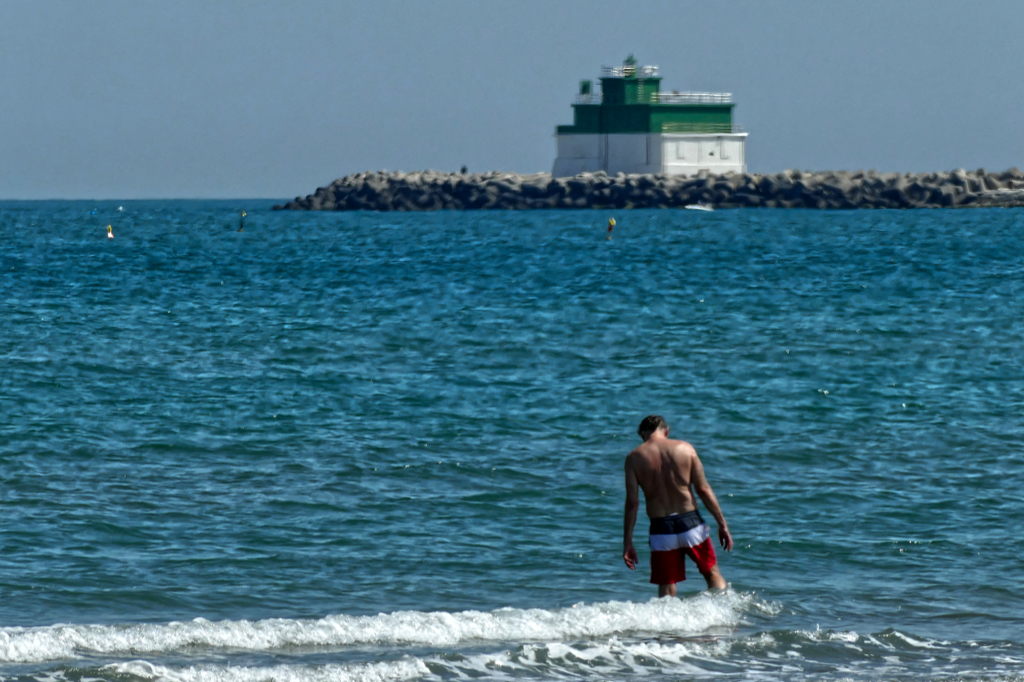
You can get to Alberoni either by public bus A from Piazzale Santa Maria Elisabetta to the stop
Alberoni Stella Maris. Or you rent a bike in the center and cycle down the western shore along the Via Malamocco.
San Lazzaro degli Armeni
An extra tour worth taking is a visit to San Lazzaro degli Armeni. This small island off the Lido’s west coast has been home to the Armenian Catholic Monastery of San Lazzaro since 1717. The most notable visitor to the monastery was the above-mentioned poet Lord Byron. He spent time on the island studying Armenian.
Today, the monastery hosts a permanent exhibition devoted to the famous guest. Another interesting landmark is a publishing house that was established by the monks in 1789. As a matter of fact, it is the oldest continuously operating Armenian publishing house in the entire world.
For a complete visit, you can join a tour of the island that the monks normally offer daily. The tours last two hours and start at 9.45 a.m., 1.45 p.m., and 3.45 p.m. There is no set entrance fee, but you have to make a donation of at least 8 €uros.
To partake, you have to make a reservation by mail at visite@mechitar.org or phone at +39 – 0415260104
To get to the island, take vaporetto #20, which commutes between San Zaccaria and the Lido Casinò stop on the island’s southern tip.
San Sèrvolo
San Sèrvolo is an uninhabited island located in the Venetian Lagoon about halfway between the Centro Storico and the southern tip of the Lido.
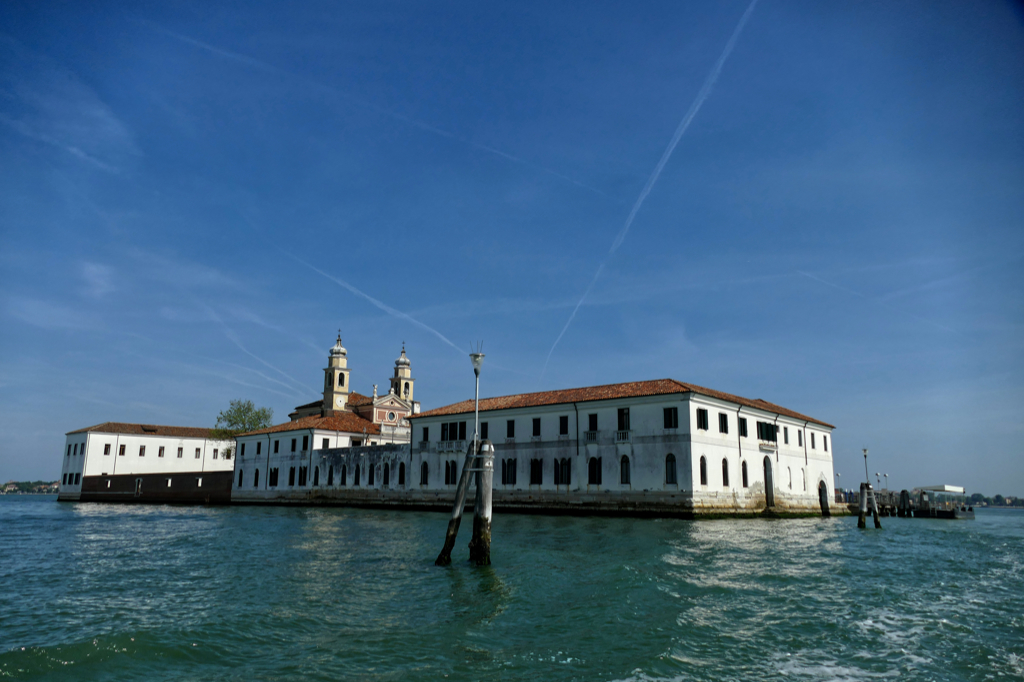
Beginning in the 8th century, Benedictine monks inhabited San Sèrvolo for almost 5 centuries. Eventually, the nuns of the Santissimi Leone and Basso convent took over after their home on the Malamocco island was destroyed by a storm.
In the early 15th century, a few dozen nuns who had been expelled by the Turks from the island of Crete moved to San Sèrvolo.
Later, a hospital was built on the island in the 18th century.
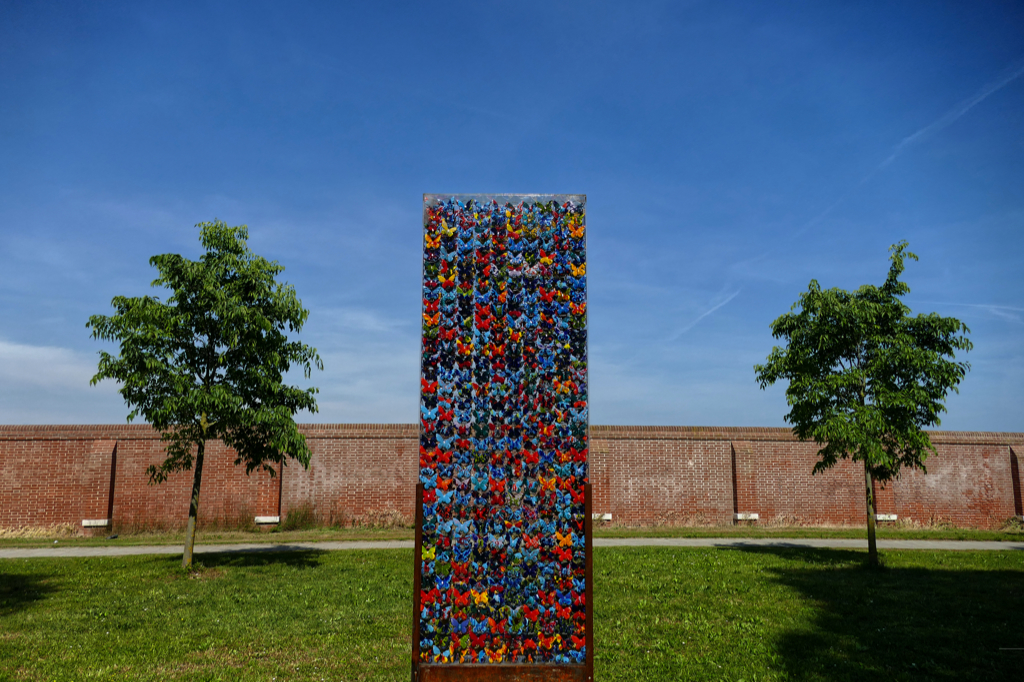
Since 1979, various educational centers and institutes have been established in San Sèrvolo. The most prestigious one is arguably the Venice International University, a joint institution of the universities of Venice, Barcelona, Munich, and Durham.
To get to the island, take vaporetto #20, which commutes between San Zaccaria and the Lido Casinò stop on the island’s southern tip.
How to Get There
Arriving at the Marco Polo Airport, the most spectacular way to travel to the Lido is by the Alilaguna boat. Especially on a sunny day, it’s just dreamy and actually the first beautiful sight of your beautiful vacation.
Alilaguna stops at various stations around the main island and also goes to the Lido. So it’s recommended to check where you’re staying and get off near that spot. A one-way trip by Alilaguna costs 15 €uros to the Lido, just like to the Centro Storico.
If you’re coming from the long-distance bus station or the train station, the best and cheapest option is to get to the Lido by vaporetti #5.1 respectively #5.2, and #6.
A Short Trip Back In Time: The Aeroporto di Venezia-Lido Giovanni Nicelli
What only a few people know today is that there is actually a fully functioning airport right on the Lido. It was established in 1915 as a military airfield. From 1926 on, civil use of the airfield was permitted. For instance, the airline Transadriatica offered flights to Vienna and Munich, among others. As a matter of fact, in the 1930s, the airport was among the busiest in all of Italy.
As in the 1950s, the airport became too small for modern commercial aircraft, first airlines flew to Treviso Airport. Since the expansion of the airport on the Lido was considered too complicated, the new Venice Marco Polo Airport was constructed. However, around the turn of the millennium, the old airfield was restored and is now a cute little hub for private aircraft.
How To Get Around the Venetian Lagoon
Even if you stay at a hotel or apartment on the Lido, you’ll probably want to visit at least the Centro Storico of Venice and possibly some other islands, too. Obviously, this is only possible by boat.
Fortunately, apart from public land transport, the ACTV transport company also has a comprehensive network of vaporetti, water buses taking you to any place in the lagoon on a regular schedule.

There are a handful of vaporetti connecting the Centro Storico with the Lido. The vaporetto line #1 is the most popular one since it starts at the Piazzale Roma and crosses the entire Canale Grande before it continues to the Lido. It’s beautiful, however, if you are opting for this cruise, make sure to get a good seat since it takes forever. Far quicker are the rides by vaporetti #5.1, respectively #5.2 and #6, since they don’t bob up and down the Canale Grande. Instead, they go through the Canale della Guidecca and make much fewer stops. A lesser-known connection is by vaporetto #20. It commutes between San Zaccaria and the Lido Casinò stop on the island’s southern tip, making stops at the islets San Sèrvolo and San Lazaro.
Once the regular vaporetti are suspended, there is a nightly connection by line #N; hence, you never get stuck on any of the islands overnight.
ACTV has an excellent website and even an App for iOS and Android. To get an overview of your options, check out their very neat system map.
Which Ticket to Buy
While at 9.50 €uros, individual tickets are ridiculously expensive, there are travel passes that are actually not that bad. The more days you buy, the cheaper your rides are. Here is a chart on how much you pay for a day pass in 2024:
| 24 hours | 48 hours | 72 hours | 168 hours (7 days) |
| 25 €uros | 35 €uros | 45 €uros | 65 €uros |
Note that a 24-hour ticket can actually be used on two days since the clock starts ticking the moment you validate your ticket and lasts actually 24 hours. With the other tickets, it’s the same, obviously.
However, these tickets are not only for the vaporetti. The passes are also valid in other parts of the Venetian area, for instance on the buses, trains, and the tram in Mestre, as well as on the Lido’s buses.

There are passes that include trips from and to the Marco Polo Airport. However, keep in mind that as you activate your pass at the airport, the clock starts ticking. It might be cheaper to pay that extra fee for those trips in order to activate your pass later when you need it for your sightseeing.
Either way, if you’re planning on seeing more than just the Lido, those passes are a really great deal.
Rolling Venice
Talking ’bout deals: Young people under 29 years of age get an even better deal with the Rolling Venice Card. This title costs 6 €uros and is valid for one whole year. Not only do you get great discounts at many museums and other places of interest. You also pay only 27 €uros for a 72-hour pass instead of the regular 45 €uros. Unfortunately, you can actually buy only 72-hour passes. But if you stay, for instance, for a week, you can get two so that you pay only 54 €uros in total.
How To Get Around the Lido di Venezia
Just like in the Centro Storico, numerous small canals are navigated by boats. In large contrast to the Venetian city center, there are roads on the Lido, hence, vehicles are allowed. Therefore, there are also public buses, and although they are few, they actually take you even to the most secluded spot on the island. If you have one of the travel passes I’ve introduced above, those buses are included. Otherwise, a single trip costs as little as 1.50 €uros.
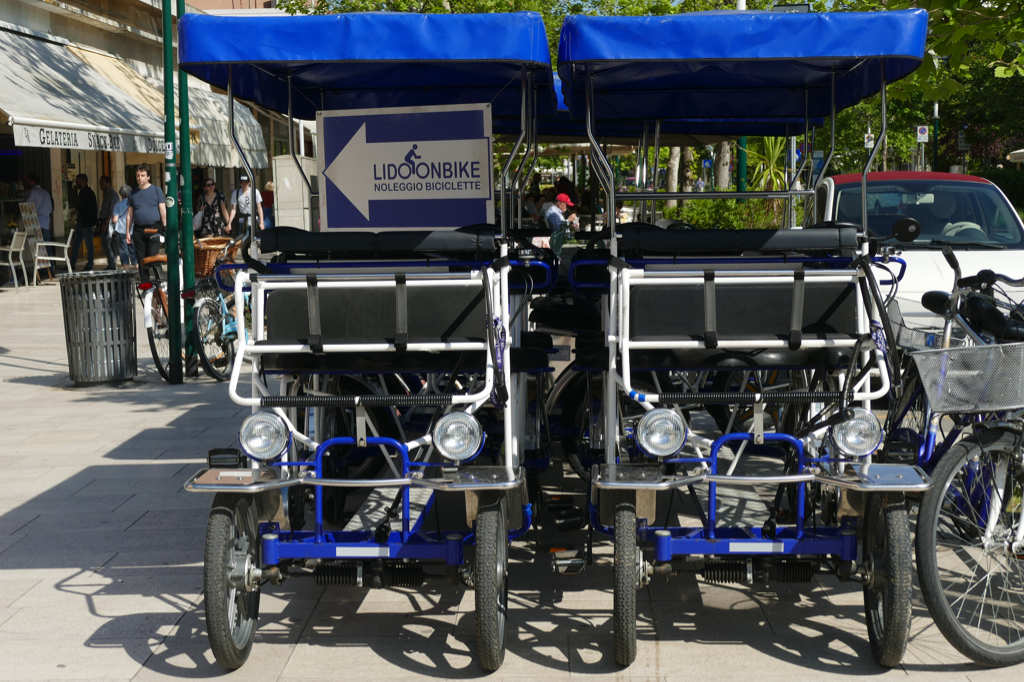
This being said, it is noticeable that many residents, as well as visitors, prefer to travel by bike. Apart from standard bicycles and e-bikes, there are also tandems and these fun bike-chariot-hybrids, where two people have to paddle in sync. By the way, they are also available for entire families. Apart from being unique and super-fun, they are actually really cleverly designed, as they have a big roof so that you don’t get fried under the Venetian sun.
However, renting bikes on the Lido is not exactly cheap: Standard bikes start at 5 €uros for 90 minutes, and for the day, you have to fork out about 10 €uros. Tandems and the double-bikes start at around 10 €uros for an hour. For a day, they cost about 20 respectively 30 €uros. A family bike costs an incredible 18 €uros for just one hour and about 50 €uros for the day.
Getting There Organized
Suppose you are staying on the Lido for a couple of days. In that case, you should definitely include a day trip to the famous Centro Storico and possibly also to some other Islands like Murano with its glass artisans, the fishing village of Burano with its lace industries, and the great church houses of Torcello.
If you want to visit those three gems on your own, you should buy at least a day pass. You can first go by vaporetti #5.1, respectively #5.2, to the stop Fondamente Nove on the main island’s northern edge. There, you hop on the vaporetto #12, which takes you first to Murano. and eventually to Burano. From there, you take a shuttle boat #9 to Torcello.
A great alternative is to visit the three isles on an organized tour. This option is even less expensive than going by yourself. However, you have to stick to their schedule and itinerary, which can be a bit of a drag. On the other hand, you don’t have to jiggle timetables and check out routes. You just hop on a boat and leave the planning and organizing to others*:
What to Eat And Where to Sleep
With its attractive mix of beaches and sightseeing options, the Lido di Venezia is a perfect summer destination. Of course, it is not exactly cheap, especially during high season. However, the unique experience makes up for a lot.

If you’re willing and able to splurge, you’ll probably opt for the Grande Albergo Ausonia & Hungaria* or Grand Hotel Excelsior*. However, on this map*, you’ll find more lodging options that won’t burn such a huge hole in your wallet:
Restaurants and bars on the Lido are catering to different folks: Tourists, day-trippers, and also locals, obviously. Especially in the center of the Santa Maria Elisabetta neighborhood, prices are definitely higher than in the Centro Storico.
For a rather simple, reasonably priced bite, try out the pizza at La Taverna on Via Tiro 9. For a snack on the beach, go to El Pecador. This fun food truck is standing at Lungomare d’Annunzio across the street from Bar Spiaggia 1.
Venice Entrance Fee
Yes, it’s true: In its fight against merciless over-tourism, Venice has installed an entrance fee. However, apart from countless other exemptions, you don’t have to worry about it if you are visiting the smaller islands like Murano, Burano, Torcello, and the Lido.
For more information on this, and a visit to Venice in general, go to my post VENICE on a Budget: When to Go, Where to Stay, What to Eat, And Much More.
Map
On this map, you can check where to go when visiting the Lido di Venezia. Clicking on the slider symbol at the top left or the full-screen icon at the top right will display the whole map, including the legend.
Pinnable Pictures
If you choose to pin this post, please use one of these pictures:
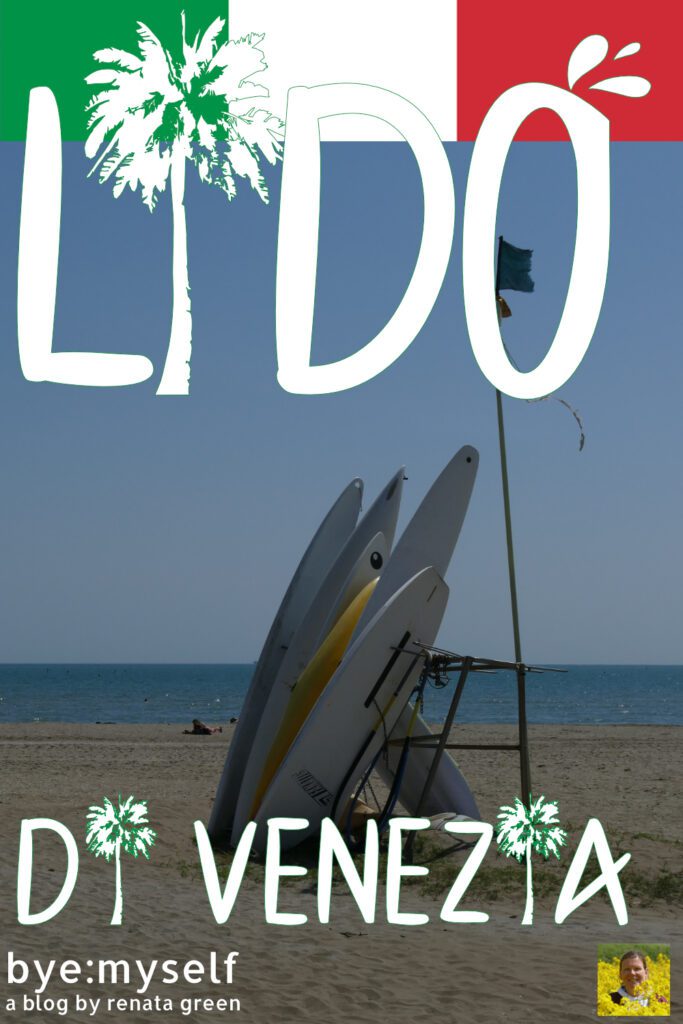
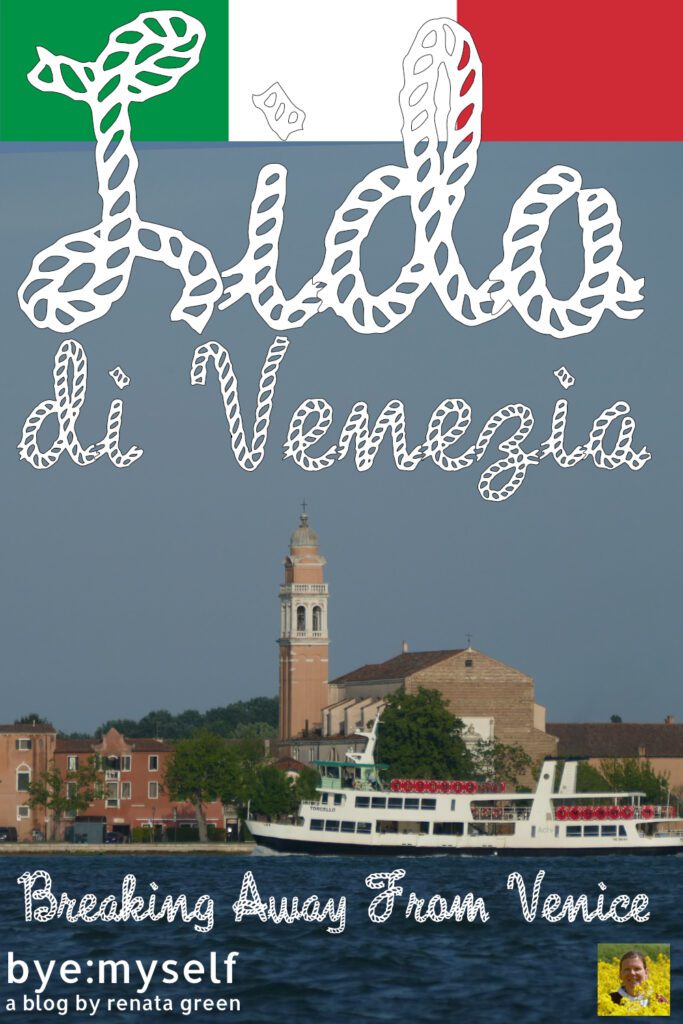
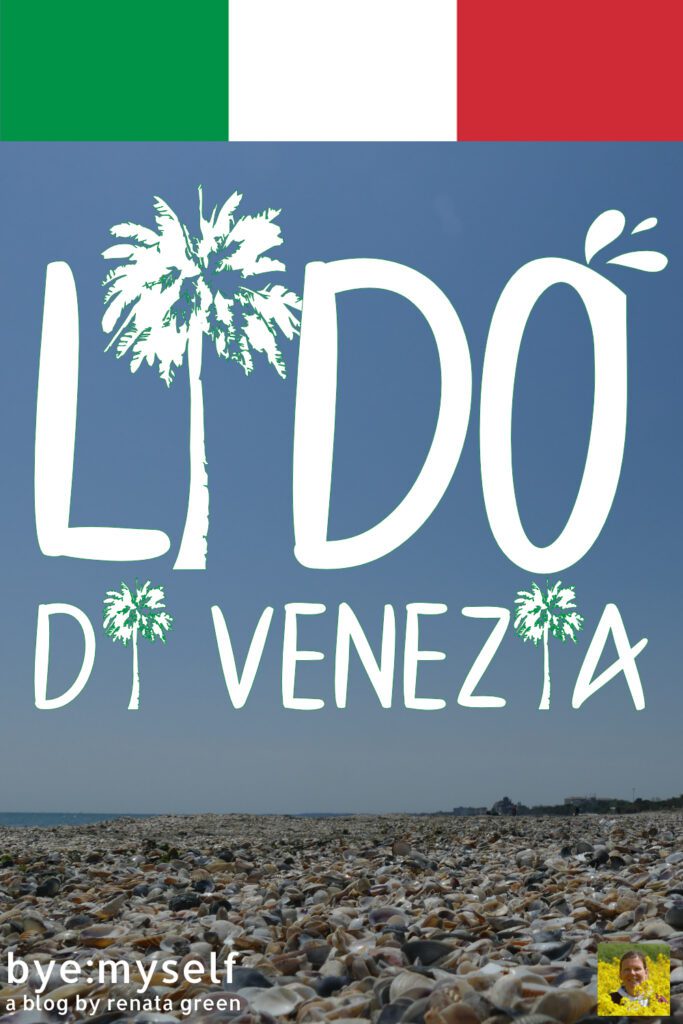

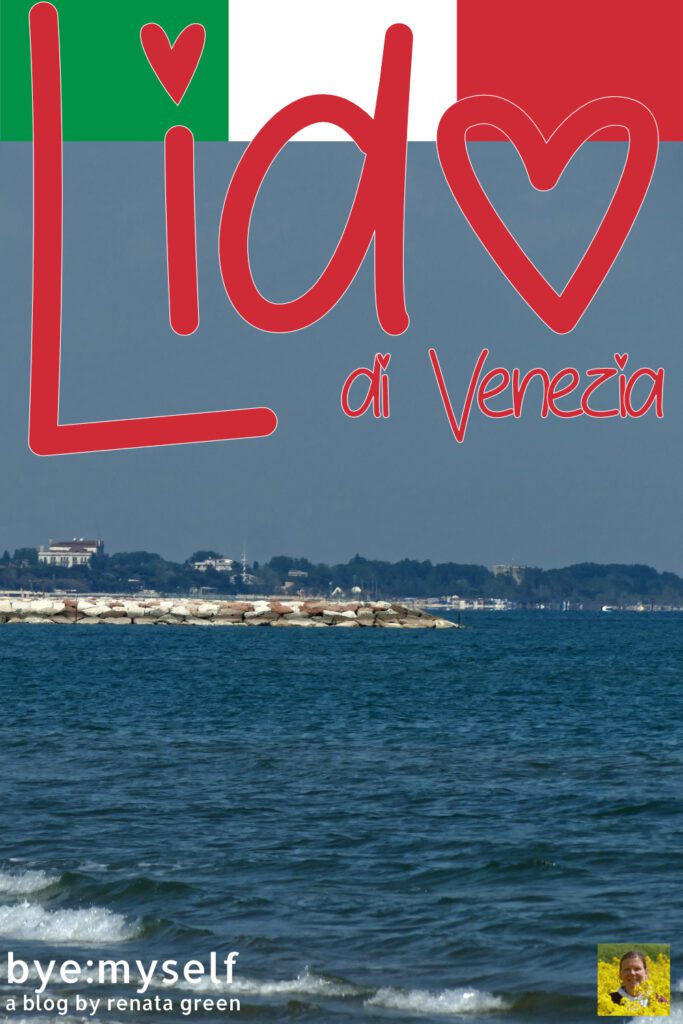

Did You Enjoy This Post? Then You Might Also Like These:
United Colors of Biennale – Visiting the Biennale di Arte in 2017
50 Most Beautiful Palaces in Venice
TORCELLO – a church, a bridge, and 15 residents
Day Trip from Venice to Padua
How to Visit the Biennale di Arte in Venice 2019
How to Visit the Biennale di Arte in Venice in 2022
Take a Break: The Three Best Beaches You Can Easily Visit From VENICE
A Day on MURANO: It’s a Crystalline World
Note: I’m completing, editing, and updating this post regularly – last in July 2025.
* This is an affiliate link. If you book through this page, not only do you get the best deal. I also get a small commission that helps me run this blog. Thank you so much for supporting me!

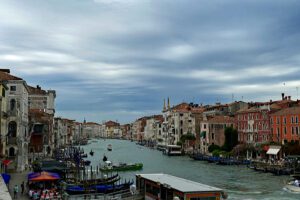


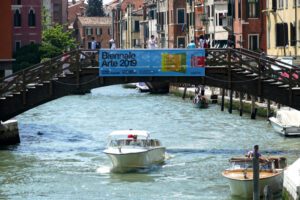


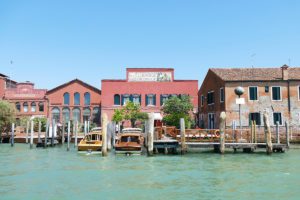
Breathtaking ocean view and impeccable commentary on Lido and its architecture.
Thank you for your appreciative comment 🙂
It’s actually a cool and very useful piece for those who want to explore more of Venice. I am so glad you shared this helpful info – will bookmark it for my next trip to Italy. Thanks for sharing!
Yes, there is so much more to see than just the centro storico. Happy travels!
This is such a thorough guide! I haven’t been to this part of Italy since the years started with 1s, but I’ll be all set for next time with these details!
There are no better days than beach days in my book, however, I would love to visit the Ancient Jewish Cemetery. I can only imagine the history! I will keep Lido in mind if I am ever able to make it over to Italy.
I tried to go only to the beach on the Lido….yet, I couldn’t resist to add at least some landmarks 😉
I love your day trip ideas from Venezia, as it’s often very crowded. The Lido seems to be a charming and quiet place with stunning architecture and history. I would like to see Chiesa Santa Maria Elisabetta, the Church Of San Nicolò Al Lido, the Old Jewish Cemetery, and stroll along the beach. The historic Hotel Grande Albergo Ausonia & Hungaria has an incredible facade!
I somehow missed this when I was in Venice. I would have loved to have visited the city’s beach resort, the Lido. I can’t believe all the seashells on that one part of the beach. I might be tempted to bring a couple home with me. I also would like to visit the Jewish cemetery. Thanks for sharing this.
Most people miss out on the Lido – which is understandable since there is sooo much to do in Venice 🙂
I must admit we have never thought of escaping Venice for a beach day. Gentle sloping beaches a short vaporetto ride would be perfect for us. Good to know that some parts of the beach are private. I might never get off my rented beach chair. But good to know there are interesting things to see in the area too.
It was a wonderful break from my…break 😉
It looks like there is so much to do there! I love the mix of beaches, history, architecture, etc. And what a beautiful beach with all the shells!